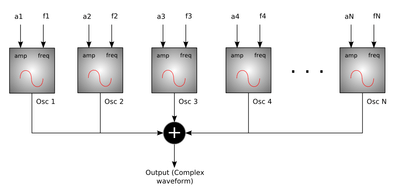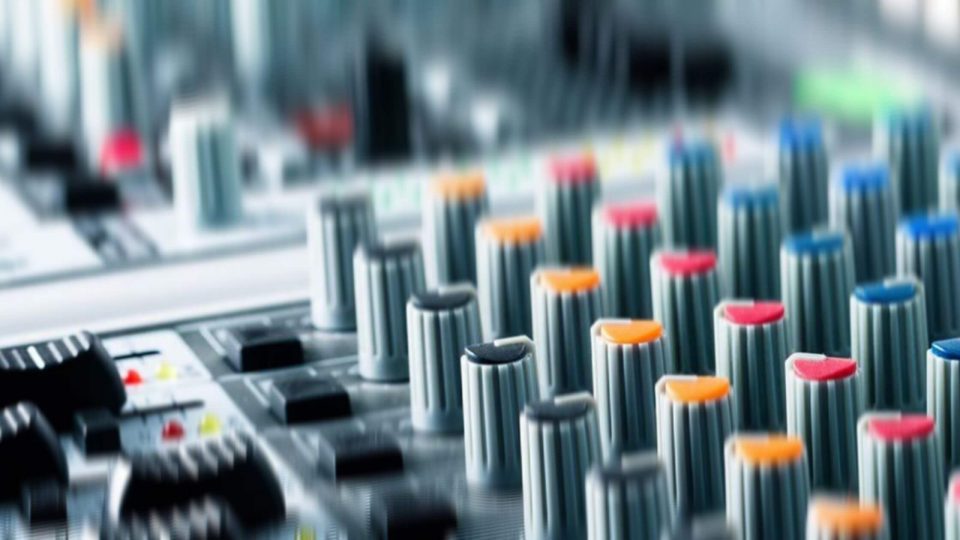Define Synthesis: How Does Additive Synthesis Work?
Additive Synthesis Explained
Yes, my selectors!
We know how synthesizers work, and we’ve explored subtractive synthesis. We’re hacking our way through the jungle of fundamentals, envelopes, oscillators, and frequencies. It seems only natural that we continue our journey up the estuary of additive synthesis we’ve now reached – kayaks at the ready! It’s time for an additive synthesis tutorial.
Define Synthesis Series
How Do Synthesizers Work?
How Does Subtractive Synthesis Work?
How Does Additive Synthesis Work?
How Does FM Synthesis Work?
How Does Wavetable Synthesis Work?
How Does Vector Synthesis Work?
How Does AM Synthesis Work?
How Does Modular Synthesis Work?
How Does Granular Synthesis?
How Does Sample Based Synthesis Work?
How Does Spectral Synthesis Work?
How Do Vocoders Work?
Additive Synthesis Basics
Additive synthesis is the method of stacking individual soundwaves on top of one another to create a new sound. The most commonly used sound waves are sine waves, but you can use any sound wave.
This method brings opportunities to create interesting sounds via manipulating individual soundwaves.. Differing the length, pitch and amplitude of each soundwave and combining them allows you to create a unique sound.

What Are Partials?
Let’s get technical!
Partials are a cool name for individual soundwaves in the collective of soundwaves. So, rather than saying we combine soundwaves, we would say we combine partials.
As you’ll remember from our article on how synthesizers work, the fundamental is the pure tone of any frequency of a sound – which is what sine waves are. This is why we wouldn’t use a sine wave for subtractive synthesis, but we can use them for additive synthesis!
The first partial, which is the fundamental frequency, is the most important waveform in your collection of partials.
This fundamental frequency mainly determines the overall loudness and pitch of the final sound. The other partials, with their own frequencies and amplitudes, do also have an effect on these characteristics. But they have more of an impact on the final tone/timbre of the sound.
Each partial helps determine if a sound is bright or dark, mellow or harsh, etc. They can also affect the pitch, but adding partials at different pitches will give you more of a unique tone.
Additive Synthesis Sound Applications
There are a lot of opportunities with additive synthesis. A lot more than subtractive synthesis, for sure!
Using additive softsynths like Razor by Native Instruments (a killer additive synthesis software), it’s possible to create alien-sounding landscapes, as well as recreate the sound of organs (which play combinations of simple, unaltered sine waves), synthesize bells (which consist of a fundamental and partials that alter the tone), and plucks and percussion (by manipulating each partials’ attack, sustain and release).
Of course, these are the result of using harmonic partials.
Additive synthesis can also produce dissonant sounds.
These types of sounds are the result of using inharmonic partials.
By using inharmonic partials, the final sound can be a wavering sound or straight up dissonant – but this depends on the variety in pitch between partials.
It is possible to create warm keys too, but we recommend using subtractive synthesis for those. It’s much more straightforward. But, if you are feeling adventurous, give it a shot with additive synthesis!
Another Synth Bites The Dust
That’s additive synthesis ticked off the list.
Your sound design skills are starting to really show now! Go ahead and design some crazy landscapes for your music. Combine your additive and subtractive skills, and see what you can come up with!
Don’t worry, there’s still more information to come. To compliment your sweet new sounds, head over to Mixxed and bag yourself some wicked samples that will make your track a true devil.
Next up, we have FM synthesis!
